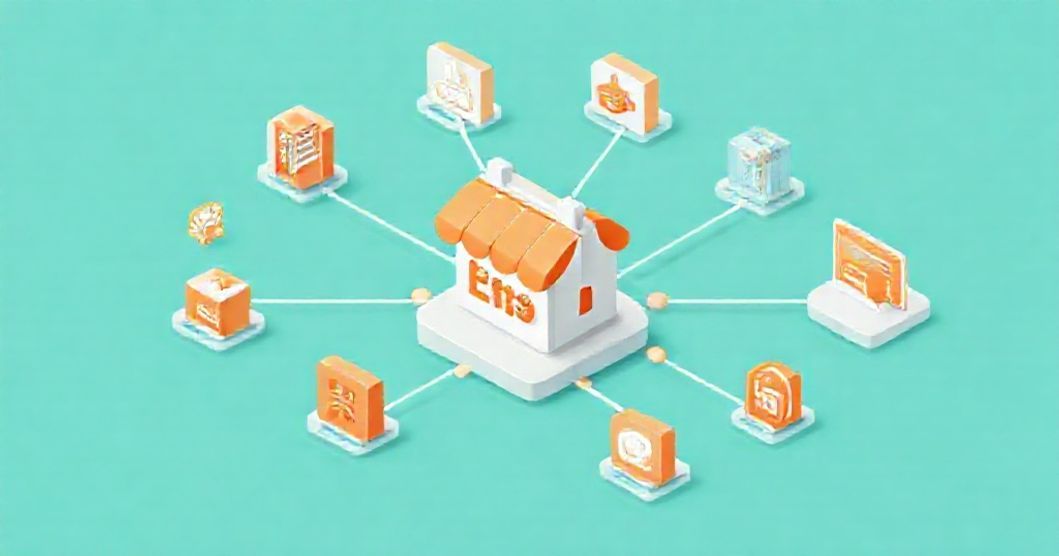In today’s dynamic e-commerce landscape, operating an Etsy shop requires more than just creating beautiful products. To truly thrive and scale, sellers often seek efficient ways to streamline their operations, automate tedious tasks, and expand their reach. This is where strategic Etsy integrations become indispensable, transforming how businesses manage everything from inventory to marketing. Understanding and implementing the right integrations can significantly enhance productivity, reduce manual errors, and ultimately contribute to sustainable growth and improved customer satisfaction for any Etsy entrepreneur.
Understanding Etsy Integrations: What Are They?
Etsy integrations are software solutions or applications that connect your Etsy shop with other platforms, tools, and services. These connections enable data to flow seamlessly between systems, automating processes that would otherwise require manual effort. For example, an integration might link your Etsy sales data directly to your accounting software or synchronize your product listings with an inventory management system. The primary goal of these integrations is to create a more cohesive and efficient operational ecosystem for your Etsy business, saving valuable time and resources.
Essential Categories of Etsy Integrations
The vast array of Etsy integrations can be broadly categorized based on their primary function, each addressing a specific operational need within your business. From managing your stock to automating your financial records, selecting the appropriate tools is crucial for enhancing efficiency and ensuring a smooth workflow. Exploring these categories helps sellers identify areas where automation and connectivity can yield the most significant benefits, transforming daily tasks into streamlined processes that support growth.
Inventory Management Integrations for Etsy Sellers
Effective inventory management is paramount for any Etsy seller, especially those operating across multiple sales channels. Integrations designed for inventory synchronization automatically update stock levels on Etsy whenever a sale occurs elsewhere, or vice versa. This prevents overselling, reduces manual counting, and ensures accurate product availability for customers. These tools often provide a centralized dashboard for tracking products, managing variations, and even forecasting demand, offering invaluable insights for purchasing and production planning.
Streamlining Shipping and Fulfillment with Etsy Integrations
Shipping and fulfillment are critical touchpoints in the customer journey, and integrations can significantly optimize these processes. These tools typically connect your Etsy orders directly with shipping carriers or fulfillment services, automating label creation, tracking number generation, and customer notifications. By consolidating order information and streamlining dispatch, sellers can save time, reduce shipping costs through negotiated rates, and enhance the overall speed and accuracy of deliveries, leading to higher customer satisfaction and repeat business.
Etsy Accounting and Bookkeeping Integrations
Managing finances is a crucial, yet often time-consuming, aspect of running an Etsy business. Accounting integrations automatically pull your Etsy sales, fees, and transaction data into your chosen bookkeeping software. This eliminates the need for manual data entry, reduces the risk of errors, and simplifies tax preparation. Such integrations provide clear financial oversight, helping sellers track profitability, manage expenses, and make informed business decisions based on real-time financial data, ensuring compliance and peace of mind.
Marketing and Social Media Integrations for Etsy Shops
Expanding your reach beyond Etsy is vital for sustained growth, and marketing integrations facilitate this effortlessly. These tools allow sellers to automatically post new listings or promotions to social media platforms, manage email marketing campaigns, or even integrate with analytics tools for better audience understanding. By automating promotional activities and leveraging external marketing channels, Etsy sellers can attract new customers, engage their existing audience, and build a stronger brand presence in a competitive online marketplace.
Print-on-Demand (POD) and Dropshipping Integrations with Etsy
For sellers utilizing print-on-demand or dropshipping models, integrations are the backbone of their operations. These tools connect your Etsy store directly with POD or dropshipping suppliers, automating the order fulfillment process from sale to shipment. When a customer purchases a product, the order details are automatically sent to the supplier, who then produces and ships the item directly. This significantly reduces inventory risk, expands product offerings without upfront investment, and streamlines the entire order processing workflow.
Enhancing Customer Relationship Management (CRM) for Etsy
Building strong customer relationships is key to long-term success. CRM integrations help Etsy sellers manage customer interactions, track purchase history, and personalize communication. While Etsy provides basic messaging, a dedicated CRM can offer more robust features like segmented customer lists, automated follow-up emails, and detailed interaction logs. This allows sellers to provide more targeted support, nurture customer loyalty, and identify opportunities for repeat business, fostering a positive brand experience.
Choosing the Right Etsy Integrations: Key Considerations
Selecting the most suitable Etsy integrations requires careful consideration of your specific business needs, budget, and growth aspirations. Begin by identifying your current pain points and the tasks that consume most of your time. Evaluate potential integrations based on their compatibility with your existing systems, ease of use, and the level of automation they offer. Always assess the pricing models – many offer free trials or tiered subscriptions – and prioritize tools with robust customer support and positive user reviews to ensure a reliable solution.
Maximizing Profitability with Strategic Etsy Integrations
Strategic Etsy integrations are not just about convenience; they are powerful tools for maximizing profitability. By automating routine tasks, sellers can drastically reduce operational costs associated with manual labor and potential errors. Efficient inventory management prevents costly stockouts or overstocking, while streamlined shipping can secure better rates. Furthermore, improved customer satisfaction through faster fulfillment and personalized communication can lead to increased sales and positive reviews, directly impacting your bottom line and enhancing your competitive advantage in the market.
The return on investment (ROI) from well-chosen integrations extends beyond monetary savings, encompassing improved time management and reduced stress. By freeing up valuable time previously spent on administrative tasks, sellers can focus more on product development, creative endeavors, and strategic business planning. This shift allows for greater innovation and market responsiveness, contributing to sustained growth and a more fulfilling entrepreneurial journey. Ultimately, integrations empower Etsy businesses to operate smarter, not harder, unlocking their full potential.
Cultivating Growth: The Strategic Advantage of Etsy Integrations
Embracing Etsy integrations is a strategic decision that empowers sellers to optimize their operations, enhance efficiency, and foster sustainable growth. By connecting your Etsy shop with specialized tools for inventory, shipping, accounting, marketing, and more, you can automate routine tasks, minimize errors, and free up valuable time. Carefully evaluating your business needs and selecting the right integrations will not only streamline your daily workflow but also position your shop for increased profitability and long-term success in the competitive e-commerce landscape. Invest in smart integrations to cultivate a more robust and resilient Etsy business.




